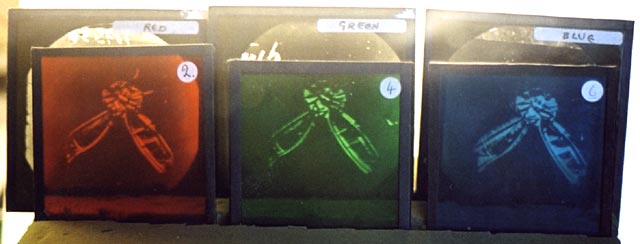Early Life
James Clerk Maxwell was born in Scotland in 1831. Maxwell’s early education was given to him by his mother, she was a dedicated Christian and his studies included the Bible. He had an exceptional memory and he showed that by memorizing all of Psalm 119. By the time Maxwell was 8 years old he became bored with his simple toys and started to conduct small scientific investigations. He liked to reflect sunlight off of a tin plate and show his parents how he captured the light and could “control” where the sun was. His mother wrote a letter to her sister describing his curiosity. Here is a passage from the letter-
“He is a very happy man, and has improved much since the weather got moderate; he has great work with doors, locks, keys etc., and 'Show me how it doos' is never out of his mouth. He also investigates the hidden course of streams and bell-wires, the way the water gets from the pond through the wall and a pend or small bridge and down a drain...”
Sadly his mother died when he was still 8 years old from abdominal cancer, as he would too later in his life. His father got him a tutor to continue on with his studies after she died but the boy tutor was just 16 and the arrangement wasn’t very successful. In 1841 it was decided that Maxwell would get a formal education at the Ednburgh Academy. He had poor health that kept him absent from school a lot, but he still managed to make excellent academic progress. When he was just 15 year old he published his first scientific paper called A Mathematical Analysis Involving the Ellipse. In 1847 he went to the University of Edinburgh and soon after published two more scientific papers. Maxwell continued to publish papers all throughout his life on a variety of subjects that included the mathematics of human perception of colors, the kinetic theory of gases, the dynamics of a spinning top, theories of soap bubbles, and many others. In 1850 Maxwell left Scotland and enrolled at Cambridge University. He had originally attended Peterhouse but transferred to Trinity College where he graduated four years later with a degree in mathematics.
Contributions
James Maxwell showed that phenomena of magnetism, electricity, and light were just different manifestations of the same fundamental laws. He made improvements to the kinetic theory of gases. He also did research on radio waves, radar, and radiant heat, and explained them by a unique system of equations. These equations first appeared in their modern form of four partial differential equations; these were in Maxwell’s textbook he wrote in 1873 called A Treatise on Electricity and Magnetism. The equations were a result of when Maxwell first began his work in electromagnetism. He looked at Michael Faraday's theories of electricity and magnetic lines of force that led him to see the connections between the approaches of Reimann, Faraday, and Gauss. The equations he derived could describe and quantified the relationships between magnetism, electricity and the propagation of electromagnetic waves. Today these equations are known as Maxwell's Equations. An example of when he first used his equations was when he used them to calculate the speed of an electromagnetic wave; he found that the speed of that wave was almost identical to that of the speed of light. Because of this, he was the first person to purpose that light was actually an electromagnetic wave. This was a very big achievement because not only was light an electromagnetic wave but it could also be said that electricity, magnetism and light could be understood as aspects of the phenomenon of electromagnetic waves.
In 1857 Maxwell decided to compete for the Adams Prize of 1857 when he found out the subject was on The Motion of Saturn’s Rings, which he had already theorized about ten years earlier. He spent two years on developing a theory to explain the physical composition of the rings. He showed that stability could be achieved only if the rings consisted of numerous small particles. He won the Adams Prize and almost a hundred years later his theory was confirmed by the Voyager 1 space probe.
Maxwell also had a hand in the development of color photography. He invented the trichromatic process, which by using red, green, and blue filters he created the first color photograph.
“Maxwell proposed that if three black-and-white photographs of a scene were taken through red, green and violet filters, and transparent prints of the images were projected onto a screen using three projectors equipped with similar filters, when superimposed on the screen the result would be perceived by the human eye as a complete reproduction of all the colours in the scene.”
 |
The pictures are of a tartan ribbon and each of the pictures was made by using a black and white slide; the slides were exposed through red, green and blue filters giving them their own color. Maxwell also had one taken through a yellow filter but it was not used in the demonstration.

“When brought into alignment, the three images (a black-and- red image, a black-and-green image and a black-and-blue image) formed a full color image. Thus demonstrating the principles of additive color."
Before he delved into color photography he was studying other types of optics and he wrote a paper called, On the Theory of Colour Vision, that was awarded the Rumford Medal. In the paper Maxwell talked about how color blindness was due to individuals not being able to recognize red light. His experiments for colored light were very well constructed and made use of a color box designed by Maxwell himself.